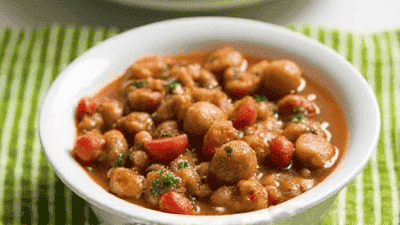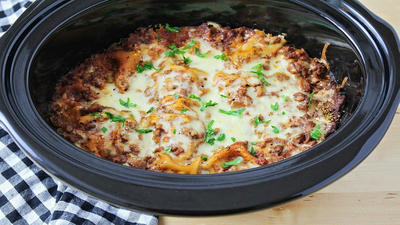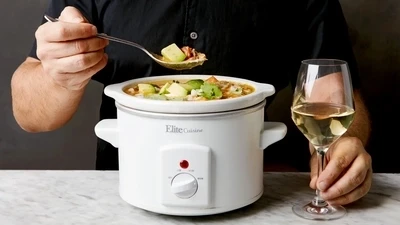
In the fast-paced world we live in, home cooks are always looking for ways to save time in the kitchen while still preparing delicious and nutritious meals. Enter the slow cooker—a magical kitchen tool that allows you to whip up hearty one-pot dinners with minimal effort. Whether you're a busy professional, a parent managing a hectic schedule, or simply someone who prefers to streamline the cooking process, the slow cooker is the ideal solution for creating flavorful meals with ease.
Before diving into the specifics, let’s explore why slow cooking has become a popular technique among home cooks:
With a slow cooker, you can prepare meals with little hands-on time. Simply toss your ingredients into the pot in the morning, set the timer, and return home to a fully cooked dinner, ready to serve.
Slow cooking allows the ingredients to meld together over time, resulting in richer and more developed flavors. Meats become tender and infused with spices and herbs, while vegetables soften and release their natural sweetness.
Slow cooking at low temperatures helps retain the nutritional value of ingredients. Cooking for longer periods with minimal water preserves vitamins and minerals, resulting in healthier meals.
Slow cookers excel at transforming inexpensive cuts of meat and leftover ingredients into flavorful meals. This makes them an excellent option for those on a tight budget who still want to enjoy hearty dinners.
One of the most appealing aspects of slow cooking is its versatility. Slow cookers can be used to prepare a wide variety of dishes, including soups, stews, casseroles, roasts, and even desserts.

When it comes to selecting a slow cooker, there are several factors to consider:
Slow cookers come in various sizes, typically ranging from 1.5 quarts to 8 quarts or more. The right size for you depends on:
Slow cookers can be found in both ceramic and metal designs. Each offers different advantages:
Most slow cookers offer at least two heat settings—low and high—with many newer models providing a medium setting. More advanced models also include additional features like browning capabilities or programmable timers.
Consider slow cookers that come with extra features that enhance usability:
To make the most of your slow cooker, keeping a few essential techniques in mind will help ensure perfect results every time:
Searing meats and aromatics before adding them to the slow cooker can enhance flavor significantly. Browning meat in a skillet adds depth, and caramelizing onions or garlic brings out their natural sweetness. If your slow cooker has a searing function, use it; if not, do it on the stovetop and transfer the ingredients.
When assembling your dish, consider layering the ingredients appropriately:
Understanding how long different ingredients take to cook is critical for slow-cooking success:
Slow cookers work best when filled to about two-thirds full. Overfilling can lead to longer cooking times and may prevent food from cooking evenly. Conversely, underfilling may cause scorching.
Unlike stovetop cooking, slow cookers do not allow liquid to evaporate. Therefore, be cautious about the amount of liquid you add. For most recipes, reduce the liquid by about one-third compared to traditional cooking methods.
Avoid opening the lid during cooking, as this can significantly impact cooking times and temperature. Each time you lift the lid, you release heat and moisture, which can prolong cooking.

Now that we have covered the basics of slow cooking, let’s explore some delectable one-pot dinner recipes to try in your slow cooker:
Ingredients:
Instructions:
Ingredients:
Instructions:
Ingredients:
Instructions:
Ingredients:
Instructions:
Ingredients:
Instructions:
Taking good care of your slow cooker will prolong its life and performance. Here are some maintenance tips to consider:
After the slow cooker has cooled, clean the removable pot with warm soapy water. Avoid using abrasive scrubbers that could damage the non-stick surface. Ensure the lid is also cleaned thoroughly.
If food is stuck to the pot, fill it with warm water and a few drops of dish soap. Allow it to sit for an hour to loosen residue before washing.
Check the rubber seal around the lid regularly for wear or damage. A proper seal is necessary for even cooking. Ensure that the electrical cord is intact and free from frays.
Store your slow cooker in a safe place to avoid damage. If you have limited storage space, consider keeping it on your countertop for easy access.

The slow cooker is a transformative tool in the kitchen that opens the door to effortless meal preparation. By understanding how to use it effectively, selecting the right recipes, and following proper care techniques, home cooks can create a wide array of delicious one-pot dinners. From savory stews to fragrant soups and satisfying casseroles, slow cooking allows for creativity and experimentation while accommodating busy lifestyles.
So grab your slow cooker, gather your ingredients, and prepare to enjoy the magic of hassle-free, flavorful meals that your entire family will love. The world of slow cooking is waiting for you to explore!